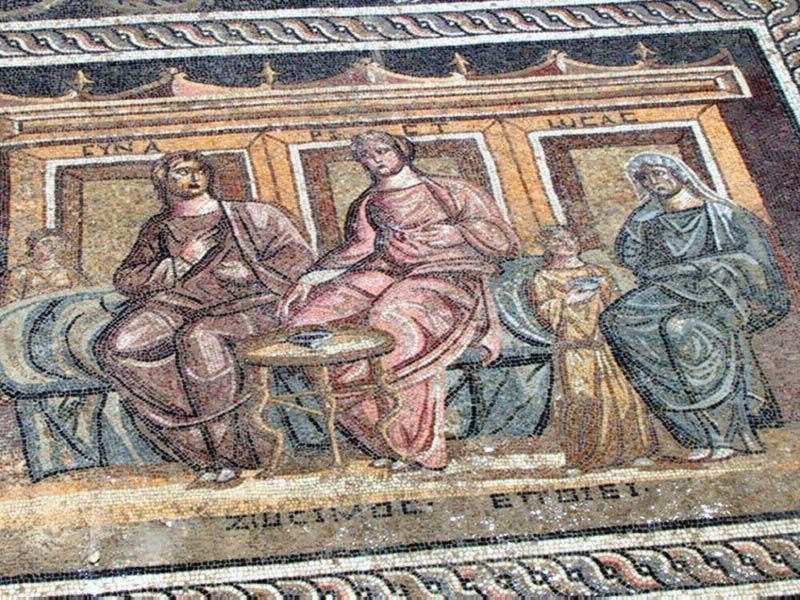Women in Greek
and Roman Theater
GRST 302-51
Tuesday/Thursday
1:30-2:45 PM
Sanders
Classroom 212
|
|
|
|
Paestan (S. Italian) red-figure amphora |
Mosaic of scene from Menander's Synaristosai "Women at Breakfast" |
Instructor:
John H. Starks, Jr.
Texts, Course Requirements, and Grade Distribution
Course Synopsis: Women, such as Clytemnestra, Medea, Helen, Hekabe/Hecuba,
Lysistrata, and Cleostrata, are among the most interesting characters developed
for the ancient stage. We will look at these women as entertaining and
stimulating visions of the feminine and unfeminine, as perceived by the
cultures that originally watched them and in our own day. This course
approaches Greek and Roman dramatic scripts, both tragic and comic, as vehicles
for presentation of social norms and anomalies at public festivals and for
general entertainment. As public works, these texts offer us a chance to
understand gender issues and social mores as presented by actors. We will also examine
and practice with ancient theater techniques to better understand the
presentation of females by actors, and we will discuss the venues and genres in
which women played female characters to examine the differences gender makes in
perception of character and in their real lives as working women. Students will
gain familiarity with these plays and characters through ample script analysis,
discussion, performance, feminist theoretical readings, and oral and written
presentations of original work.
This course must begin with Aeschylus’ Oresteia as a powerful commentary on early classical
Athenian impressions of women, motherhood and the feminine/masculine dichotomy
presented before a public audience. Several of Euripides’ war plays (Andromache,
Trojan Women, Hecuba) focused on the
defeated Trojan women address both standard societal observations on women in
crisis and a developing dramatic intensity in Euripides’ female roles. Excerpts
from Medea show that Euripides
actively thought about his presentation of the feminine and unfeminine in his
dramatic constructions and give voice to the foreign woman in a Greek context.
The rescue drama Ion presents rape as
a serious and complex social offense against women, but also shows a growing
attraction for dramatic resolution found in reconciliation and restoration of
domestic peace.
Aristophanes’ “women” plays (Lysistrata,
Thesmophoriazousai, Ekklesiazousai),
while resting firmly on the comic appeal of offering male stereotypes of women,
also raise new social issues regarding the role women played in Athenian civic
and religious life, and address Euripides’ approach to presentation of the
tragic woman. Three of Plautus’ “darker” social comedies (Bacchides, Casina,
Truculentus) show a continuing
fascination with women at the center of dramatic structure and offer
significant voice to women’s comments on their public and domestic roles in
Hellenistic Greek society, and sometimes glimpses of their place in Roman
society. A selection of Hellenistic and late Greek mime scripts will help
further develop this picture of women’s dual lives and indicate some of the few
roles actually played by actresses on Greek and Roman stages. We will end with
Seneca’s Medea and Trojan Women to study his differing dramatic techniques, philosophical
concerns and Roman imperial impressions regarding tragic Greek women.
|
Domina oppresses Hysterium – Stratford
Shakespeare Festival 2009 Martha Graham dancing the title role in
her Clytemnestra 1960 |



